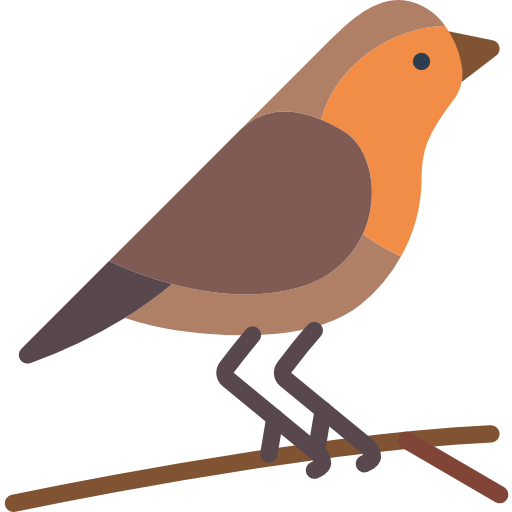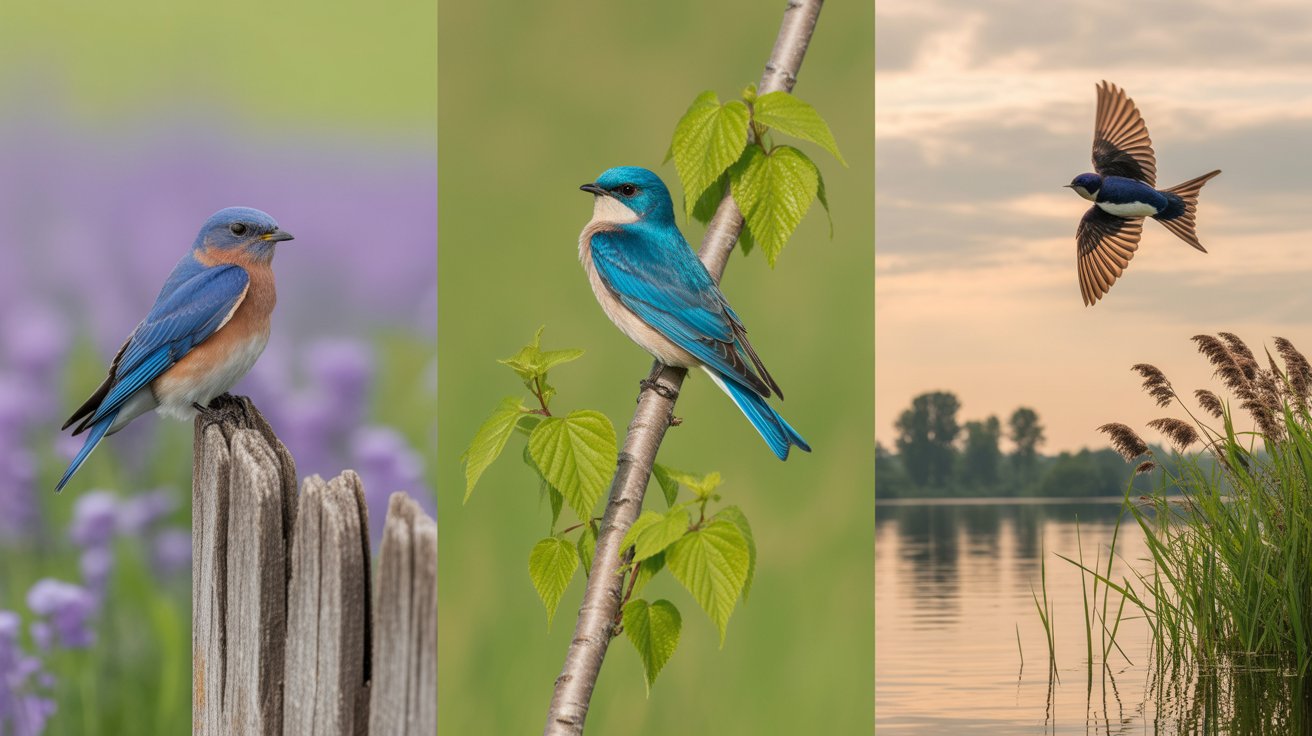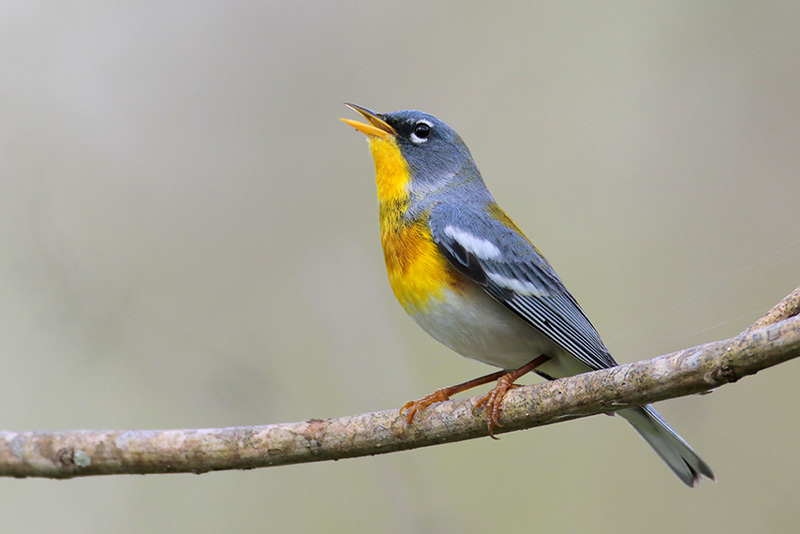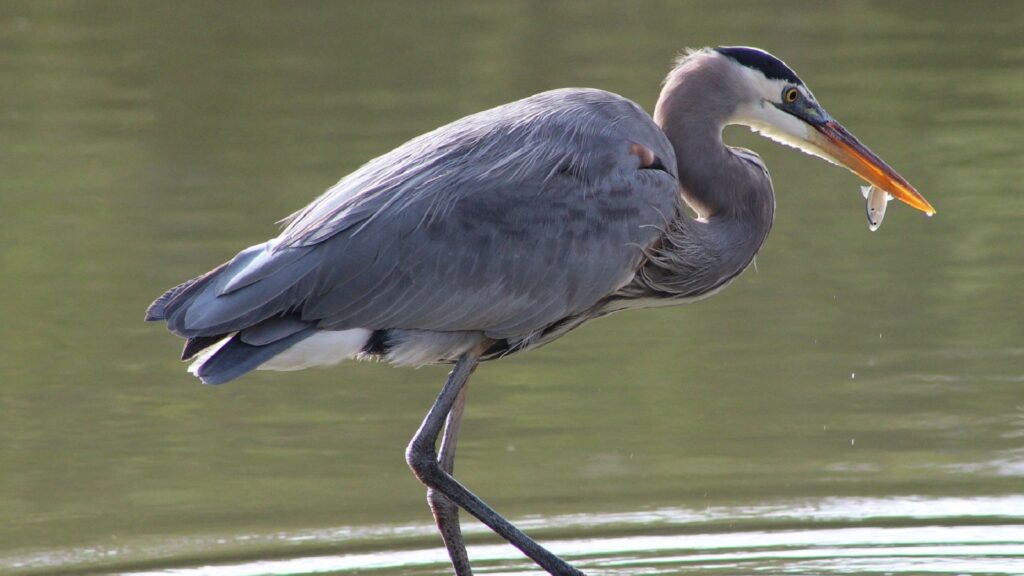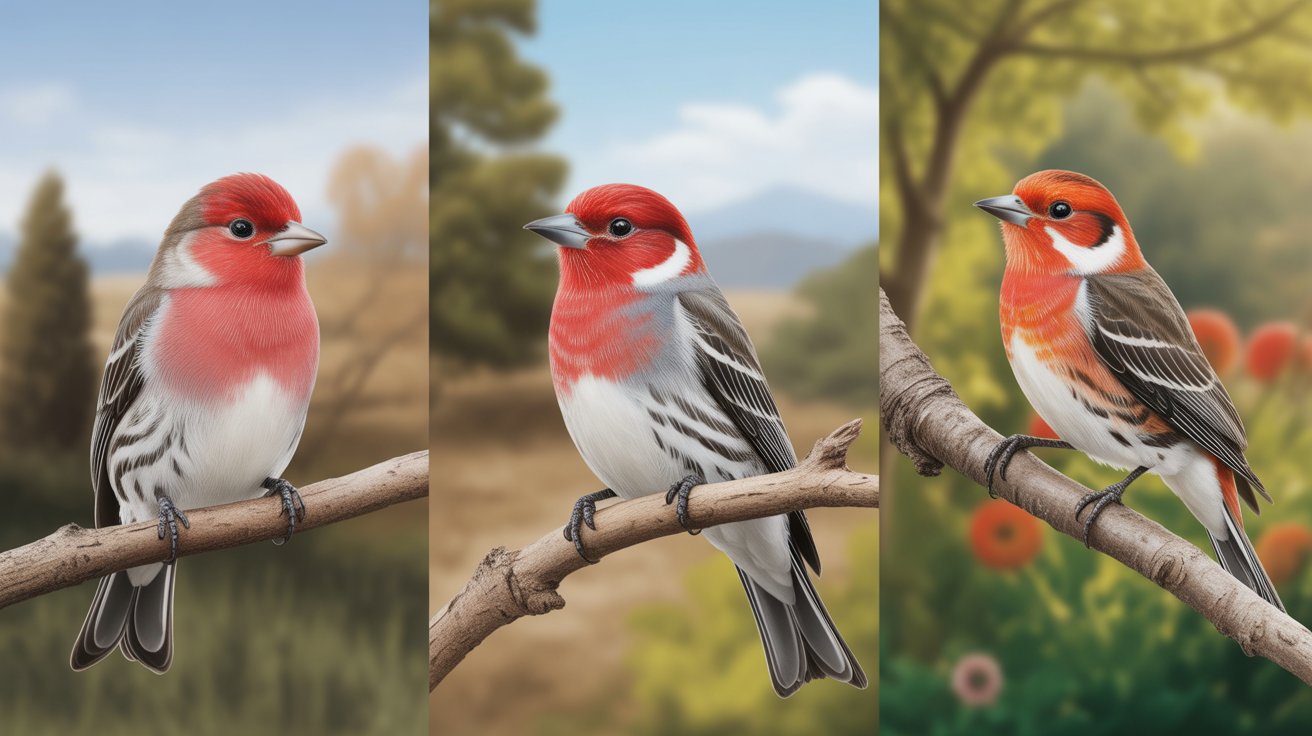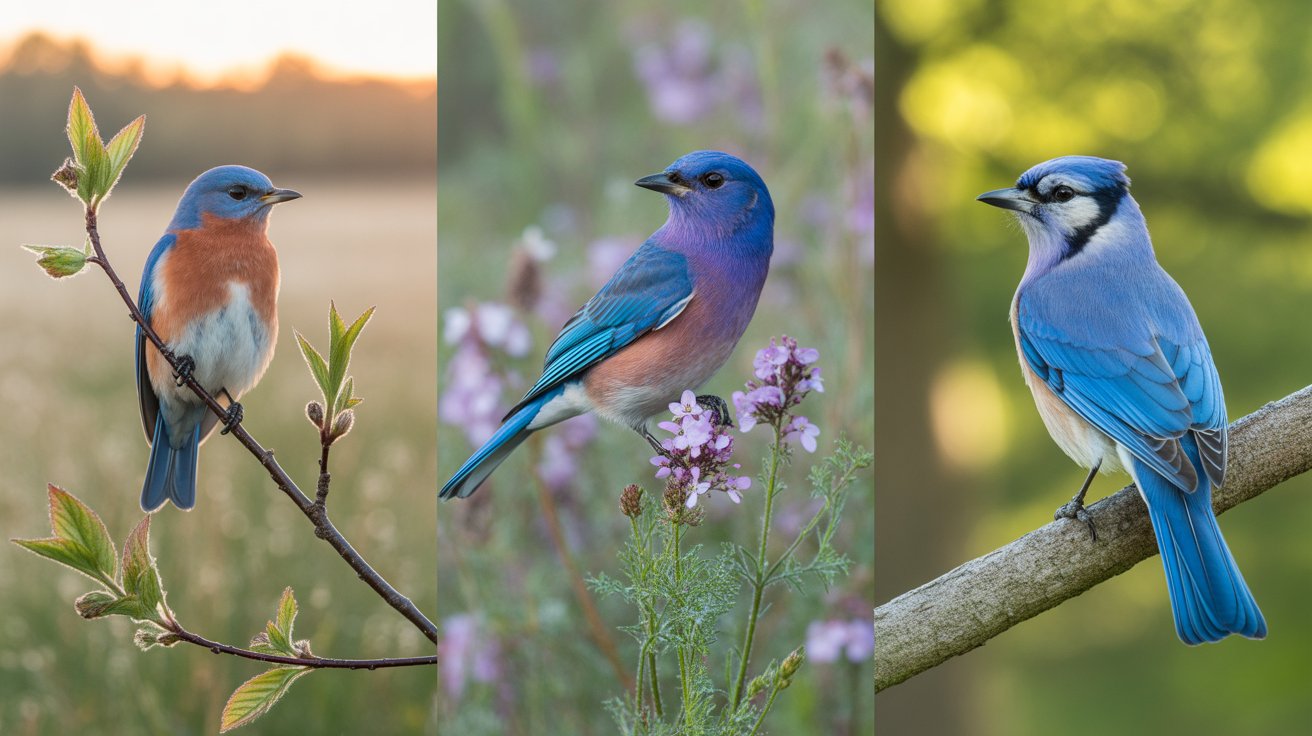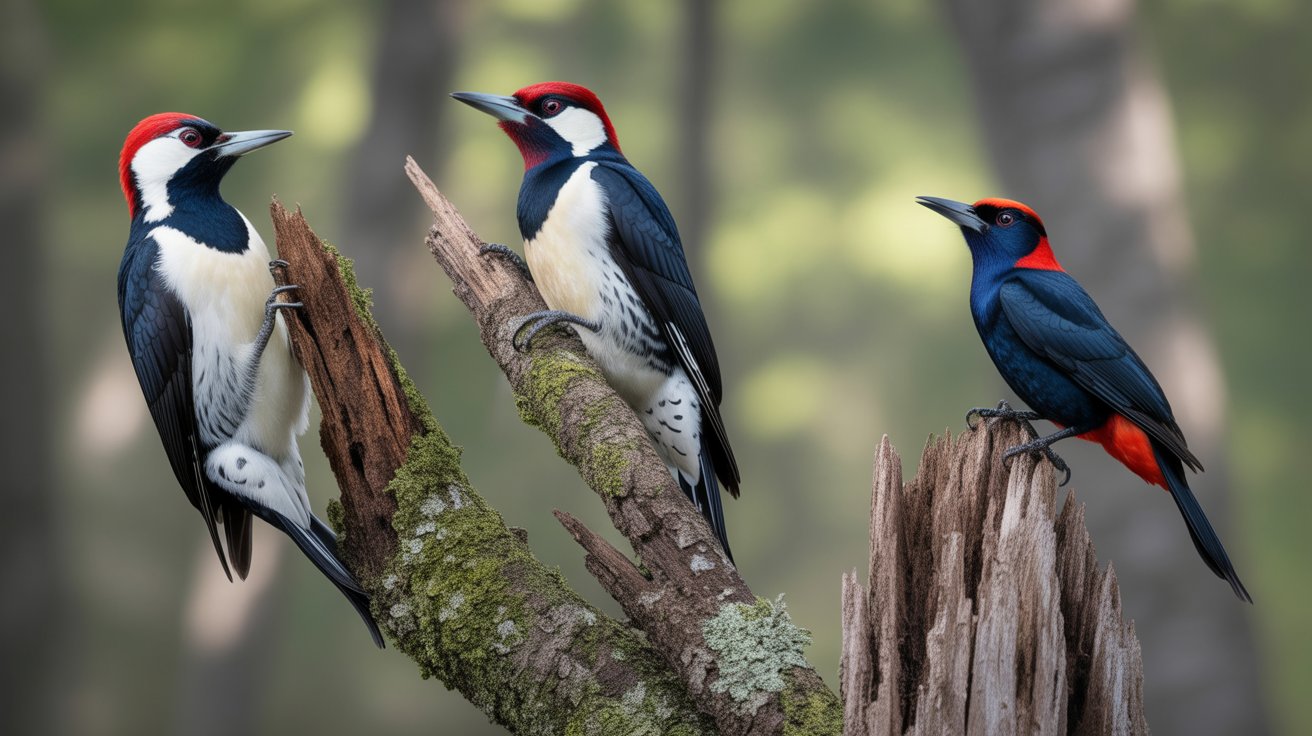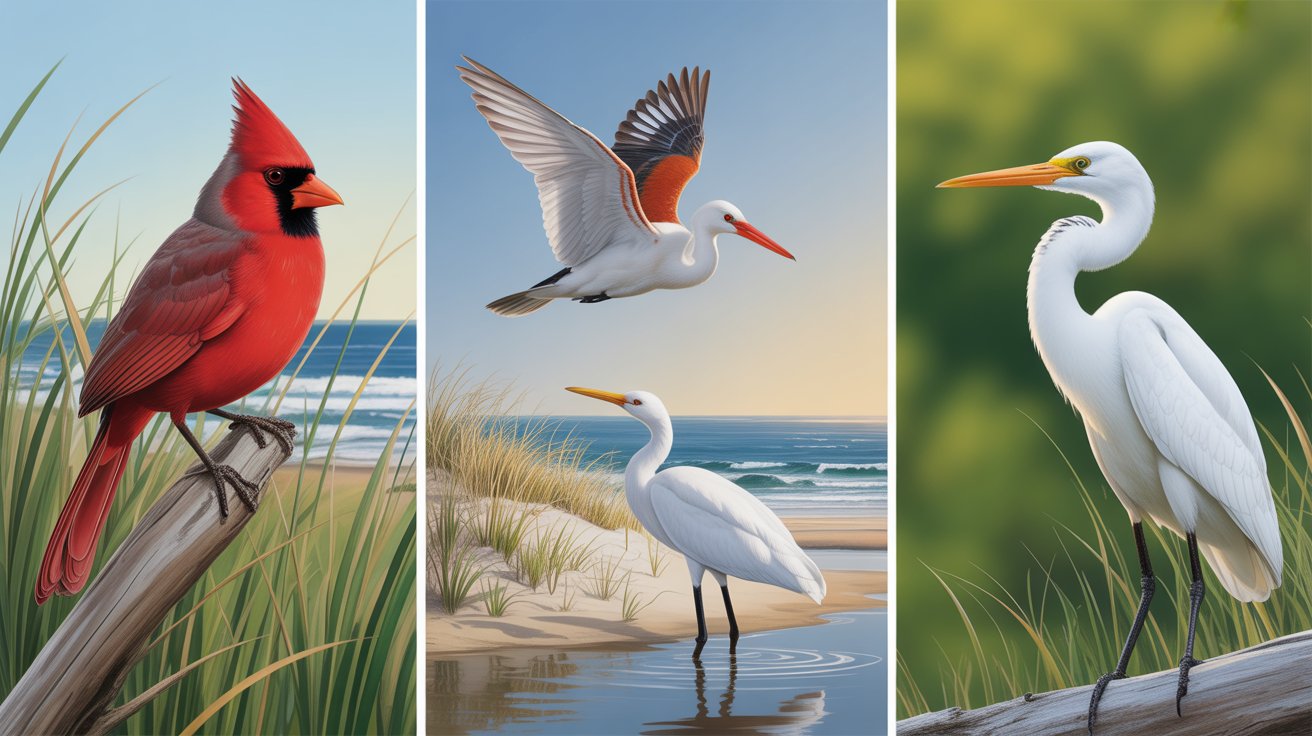If you’re a birdwatcher or nature lover living in or visiting Michigan, you’re in luck. The Great Lakes State is home to a wide variety of beautiful birds, including many with vibrant blue plumage. Whether you’re strolling through a forest trail, relaxing near a lakeside, or exploring open fields, chances are you’ll spot some of these stunning blue birds.
Blue birds are not only a joy to watch, but their presence also offers important insights into the health of local ecosystems. Their songs brighten the morning air, and their behavior adds life to any landscape. From small, active warblers to bold, intelligent jays, Michigan’s blue birds come in all shapes and sizes.
In this article, you’ll find detailed information about 15+ different blue bird species that you can see across Michigan. Each bird profile includes identification tips, physical descriptions, behavior, and fun facts to help you identify them easily. You’ll also learn about their preferred habitats, sizes, and what makes each species special.
So grab your binoculars and let’s explore the blue wonders of Michigan together. By the end of this article, you’ll be able to recognize these winged beauties on your next nature walk—or even from your backyard.
Contents
- 1. Eastern Bluebird
- 2. Blue Jay
- 3. Indigo Bunting
- 4. Tree Swallow
- 5. Cerulean Warbler
- 6. Barn Swallow
- 7. Belted Kingfisher
- 8. Black-throated Blue Warbler
- 9. Blue-gray Gnatcatcher
- 10. Purple Martin
- 11. Northern Parula
- 12. White-breasted Nuthatch
- 13. Common Grackle
- 14. Cliff Swallow
- 15. Great Blue Heron
- FAQs
- Conclusion
1. Eastern Bluebird
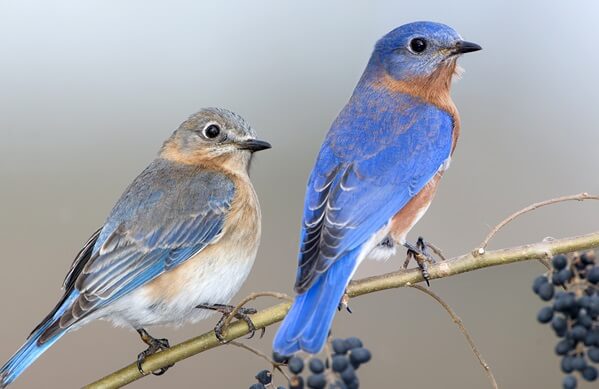
With its brilliant blue back and warm reddish chest, the Eastern Bluebird is a charming sight in Michigan’s open woodlands and meadows. You’ll often see them perched on fence posts or fluttering low to the ground in search of insects.
Scientific Name: Sialia sialis
Wingspan: 9.8–12.6 inches
Length: 6.3–8.3 inches
Weight: 0.95–1.20 oz
These birds are cavity nesters, often found in nest boxes or tree holes. They prefer open habitats with scattered trees, making suburban areas and farmlands ideal. Males are more vibrant than females, but both sexes display that signature blue coloration.
Eastern Bluebirds are known for their melodious calls, which sound like a soft “cheer-cheerful-charmer.” They mainly eat insects and berries, especially in the colder months.
Their populations have rebounded due to conservation efforts and the popularity of bluebird nest boxes across the state. If you want to attract them, a mealworm feeder and a proper nest box can do wonders.
2. Blue Jay
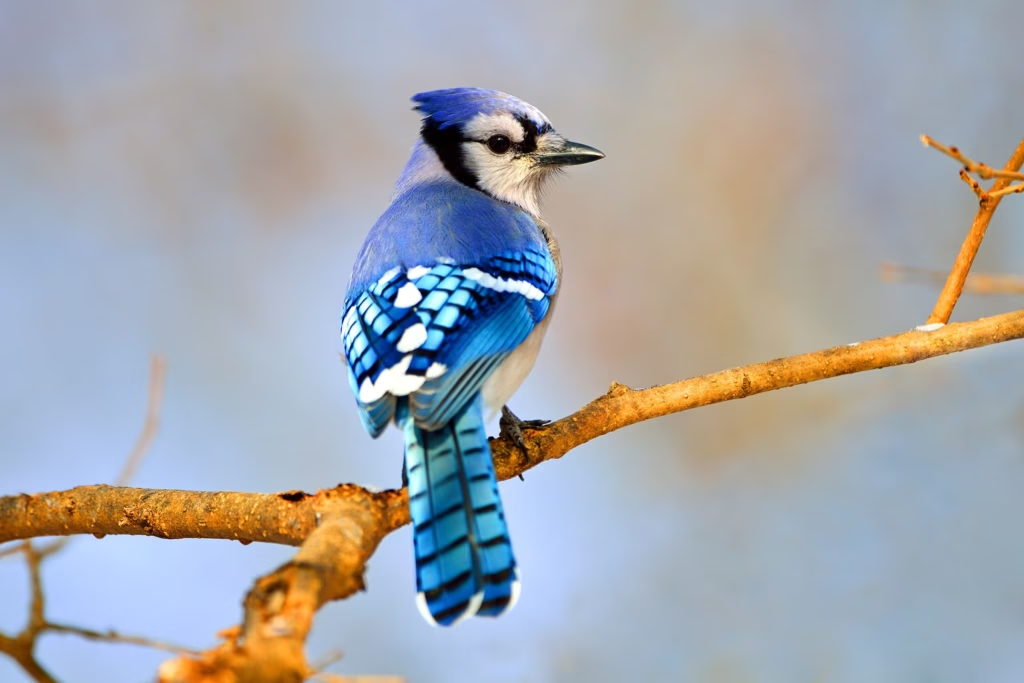
Bold, loud, and unmistakable, the Blue Jay is one of Michigan’s most recognized birds. Its electric blue feathers, black collar, and white underparts make it a frequent guest at backyard feeders.
Scientific Name: Cyanocitta cristata
Wingspan: 13–17 inches
Length: 9–12 inches
Weight: 2.5–3.5 oz
Blue Jays are members of the crow family, and their intelligence shows. They can mimic hawk calls and often cache food like acorns. You’ll hear their piercing “jay-jay” call echoing through deciduous and mixed forests.
Though they can be aggressive at feeders, they play a key role in seed dispersal. Their bold personality and striking looks make them a favorite among birdwatchers.
Look for them year-round in Michigan, especially near wooded areas and suburban neighborhoods. Offer peanuts or sunflower seeds to attract them.
3. Indigo Bunting
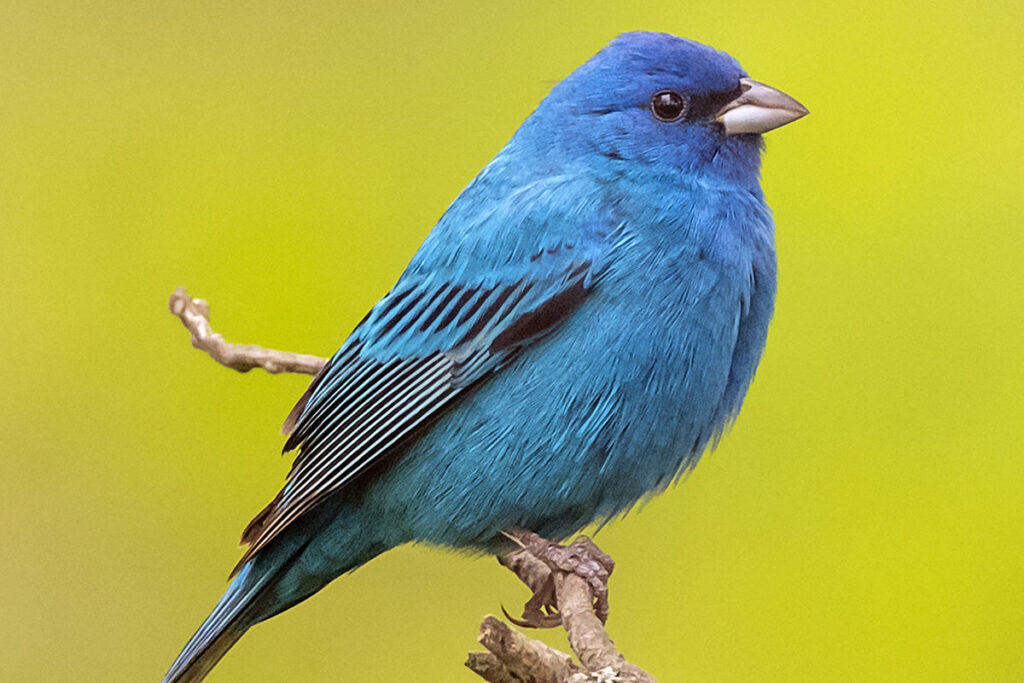
A dazzling jewel of the summer woods, the male Indigo Bunting is a small, deep-blue songbird that catches the sunlight like a sapphire. Females, by contrast, are brownish with just a hint of blue.
Scientific Name: Passerina cyanea
Wingspan: 7.5–8.7 inches
Length: 4.5–5.9 inches
Weight: 0.4–0.6 oz
These birds prefer brushy areas, forest edges, and powerline clearings. Their cheerful, complex song is delivered from exposed perches. You’re most likely to see them in Michigan from May to August.
Indigo Buntings migrate at night using stars for navigation. Their diet consists mainly of insects during summer and seeds in the cooler months.
To attract them, offer small seeds like thistle and millet, and keep your yard shrubby with open patches.
4. Tree Swallow
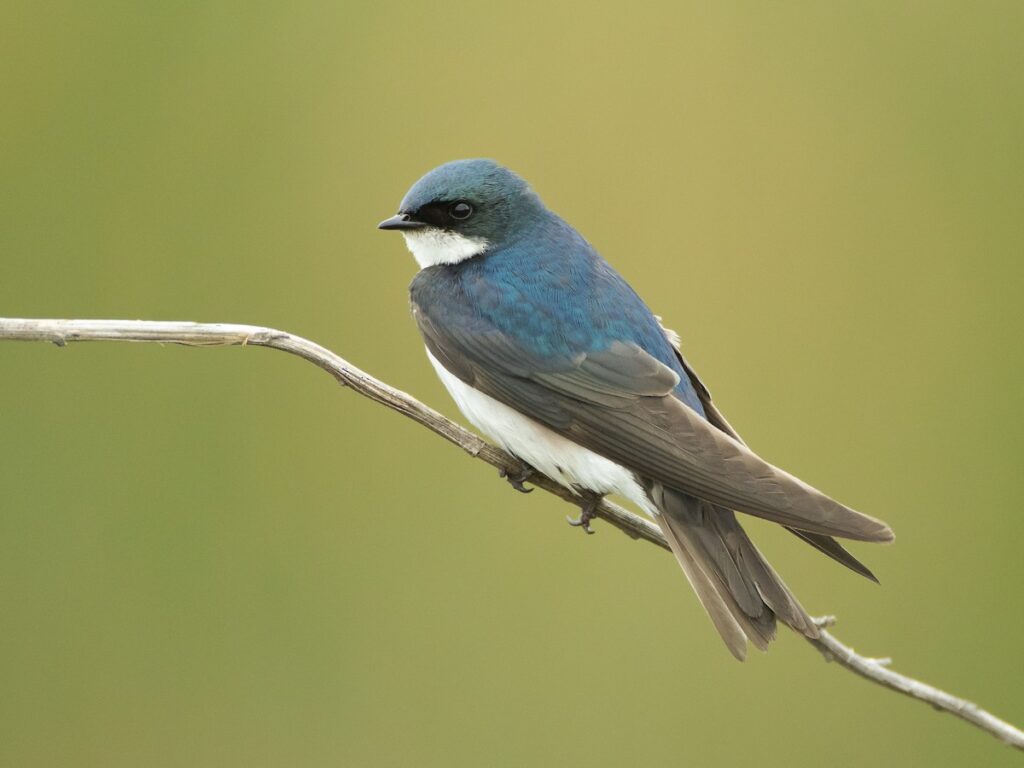
Sleek and iridescent, Tree Swallows are fast-flying aerial acrobats with shimmering blue-green backs and clean white undersides. They nest in open areas near water.
Scientific Name: Tachycineta bicolor
Wingspan: 11.8–13.8 inches
Length: 4.7–5.9 inches
Weight: 0.6–0.9 oz
These swallows are highly social and often seen in flocks swooping over ponds, lakes, and fields catching insects mid-air. Their soft warbling calls fill the air in spring and summer.
They’re cavity nesters like bluebirds and readily take to nest boxes. If you want to attract them, place boxes near open water and avoid using pesticides.
Tree Swallows are in Michigan from spring through early fall and migrate south in winter.
5. Cerulean Warbler
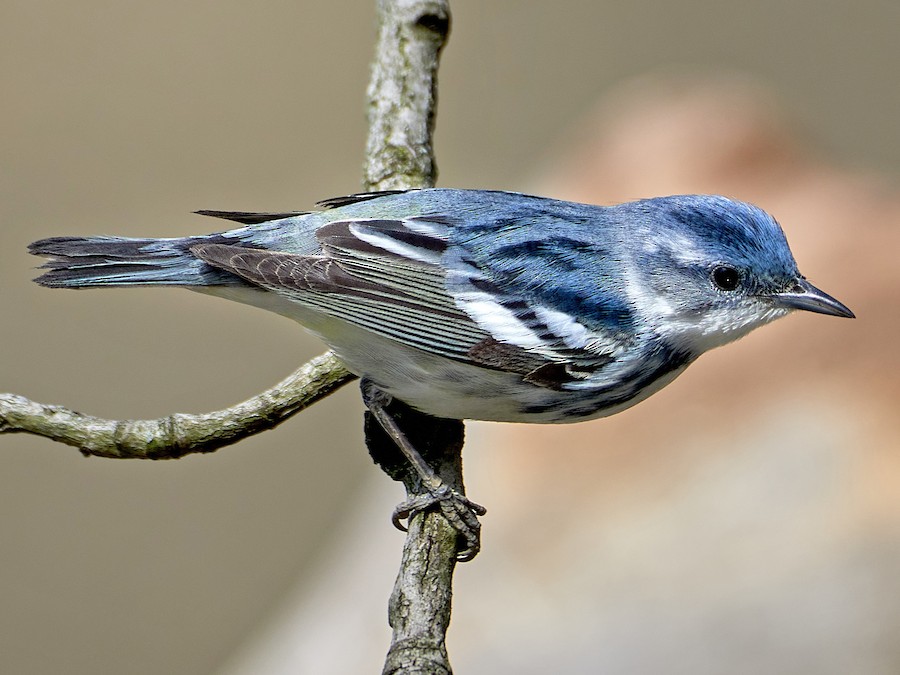
The Cerulean Warbler is a sky-blue gem of the forest canopy, and one of the rarer blue birds you can find in Michigan. Males are particularly striking with white underparts and streaked sides.
Scientific Name: Setophaga cerulea
Wingspan: 7.5–8.7 inches
Length: 4.3 inches
Weight: 0.3–0.4 oz
This species prefers large tracts of mature deciduous forest, especially near water. Their high-pitched, buzzy song can help you find them, though they often stay well above eye level.
They are declining in numbers due to habitat loss, so spotting one is a special treat. They feed mostly on insects and are present in Michigan from late spring to mid-summer.
Protecting their habitat is key to their survival.
6. Barn Swallow
Known for their forked tails and graceful flight, Barn Swallows often flash a blue back and head as they dart through the air. Their underparts are rufous-orange.
Scientific Name: Hirundo rustica
Wingspan: 11.4–12.6 inches
Length: 5.9–7.5 inches
Weight: 0.6–0.7 oz
Barn Swallows are commonly found near open fields, farms, and barns—hence their name. They build mud cup nests in manmade structures and are one of the most widespread swallows.
Their flight is agile and mesmerizing as they snatch flying insects. Their cheerful twittering song is a familiar sound of summer.
You can attract them by providing open areas, avoiding pesticides, and allowing nesting sites in sheds or barns.
7. Belted Kingfisher
Sporting a shaggy crest and a banded blue-gray chest, the Belted Kingfisher is a unique, fish-loving bird commonly found near rivers and lakes across Michigan. Its rattling call is often heard before the bird is seen.
Scientific Name: Megaceryle alcyon
Wingspan: 19–23 inches
Length: 11–14 inches
Weight: 4.9–6 oz
Belted Kingfishers dive headfirst into the water to catch fish with precision. Males and females look similar, though females have a rusty belly band, making them one of the few bird species where the female is more colorful.
They nest in burrows dug into riverbanks and can be seen perched on branches overhanging the water. If you’re near a stream or lake and hear a loud rattle, look for this stocky, blue-headed bird.
8. Black-throated Blue Warbler
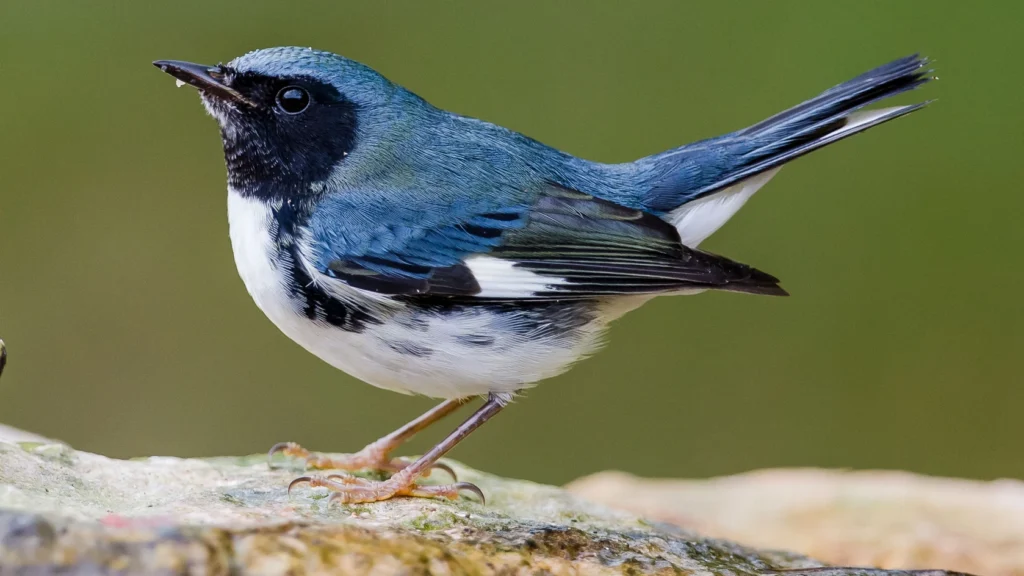
This small warbler is a secretive bird of Michigan’s dense forests. Males are striking, with deep blue upperparts, a black face and throat, and white belly.
Scientific Name: Setophaga caerulescens
Wingspan: 7.5–8.3 inches
Length: 4.3–5.1 inches
Weight: 0.3–0.4 oz
You’ll find them in the understory of deciduous forests during spring and summer. Their soft, buzzy song can help you locate them in thick foliage.
Females are olive-brown, but both sexes show a distinct white square on the wing. They primarily feed on insects and spiders and migrate to the Caribbean in winter.
9. Blue-gray Gnatcatcher
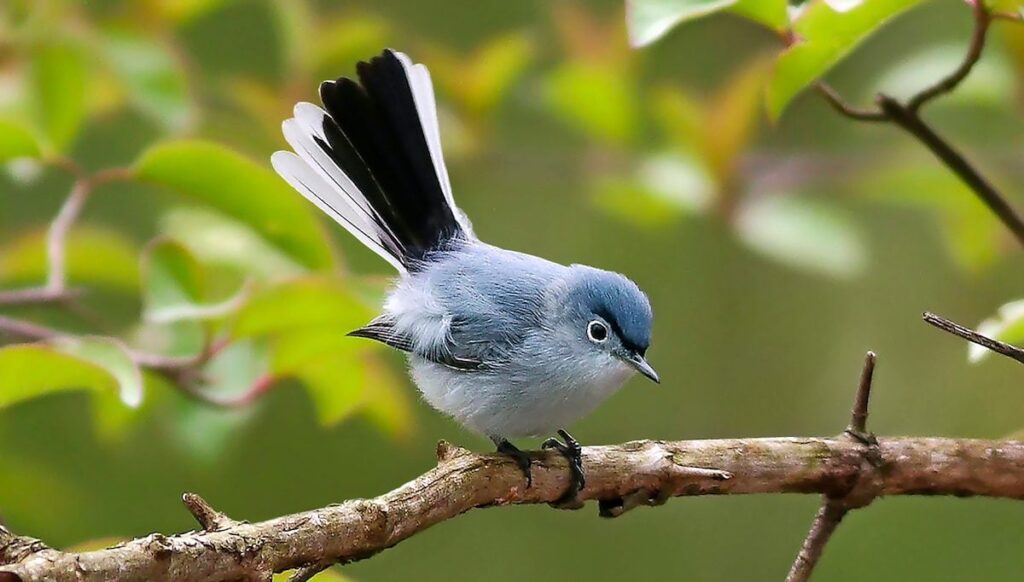
Tiny, energetic, and full of character, the Blue-gray Gnatcatcher is a slender bird with soft blue-gray feathers, a long tail, and a bold white eye ring.
Scientific Name: Polioptila caerulea
Wingspan: 6.3 inches
Length: 3.9–5.1 inches
Weight: 0.2–0.3 oz
They dart through trees flicking their tails and catching small insects. You’ll often hear their high-pitched wheezy calls before spotting them in woodlands and shrubby areas.
Though tiny, they’re territorial and feisty. They build tiny cup-shaped nests from plant fibers and spider silk—often mistaken for hummingbird nests.
10. Purple Martin
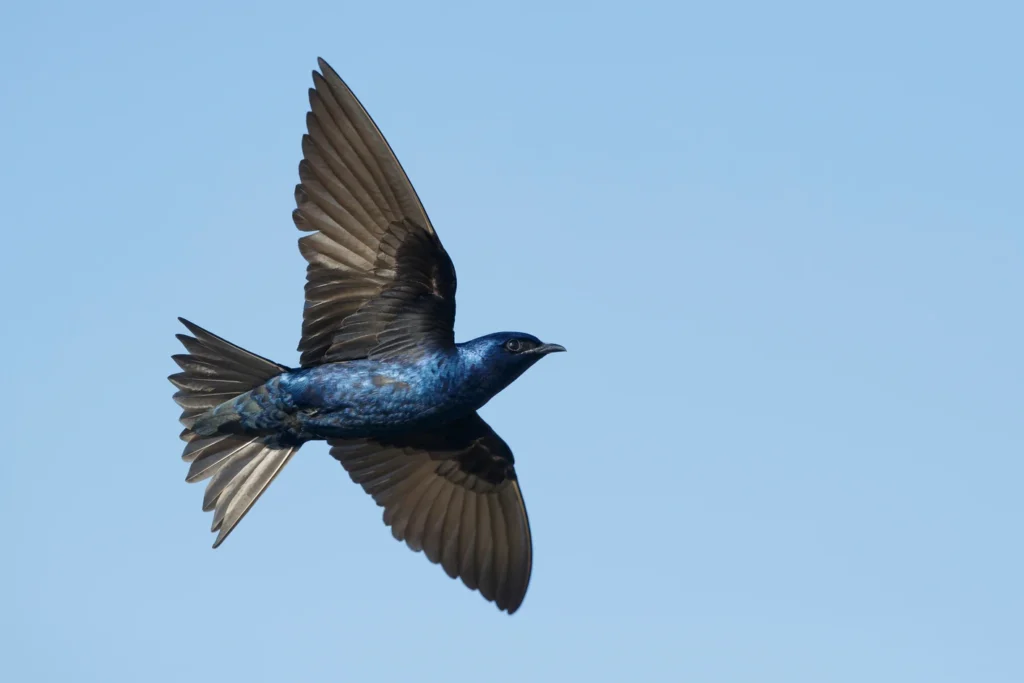
Purple Martins are the largest swallows in North America, and adult males look almost entirely deep blue to purplish-black. They are aerial feeders, gracefully soaring through the sky.
Scientific Name: Progne subis
Wingspan: 15.3–16.1 inches
Length: 7.5–8.7 inches
Weight: 1.6–2.1 oz
Purple Martins rely heavily on human-made housing in the eastern U.S., including Michigan. Colonial nesters, they’ll return year after year to apartment-style martin houses.
They feed entirely on flying insects and migrate to South America for winter. Their presence is a delight, and many Michiganders actively manage martin colonies.
11. Northern Parula
A small but vivid warbler, the Northern Parula has bluish upperparts, a greenish patch on the back, and a bright yellow throat blending into a chestnut band.
Scientific Name: Setophaga americana
Wingspan: 6.3–7.1 inches
Length: 4.3 inches
Weight: 0.2–0.4 oz
These birds are often found in mature forests, especially near water where moss and lichen hang from trees. Their rising, buzzy trill of a song gives away their presence.
Northern Parulas nest high in trees, tucking their nests into hanging vegetation. Though small, their colorful plumage makes them stand out.
12. White-breasted Nuthatch
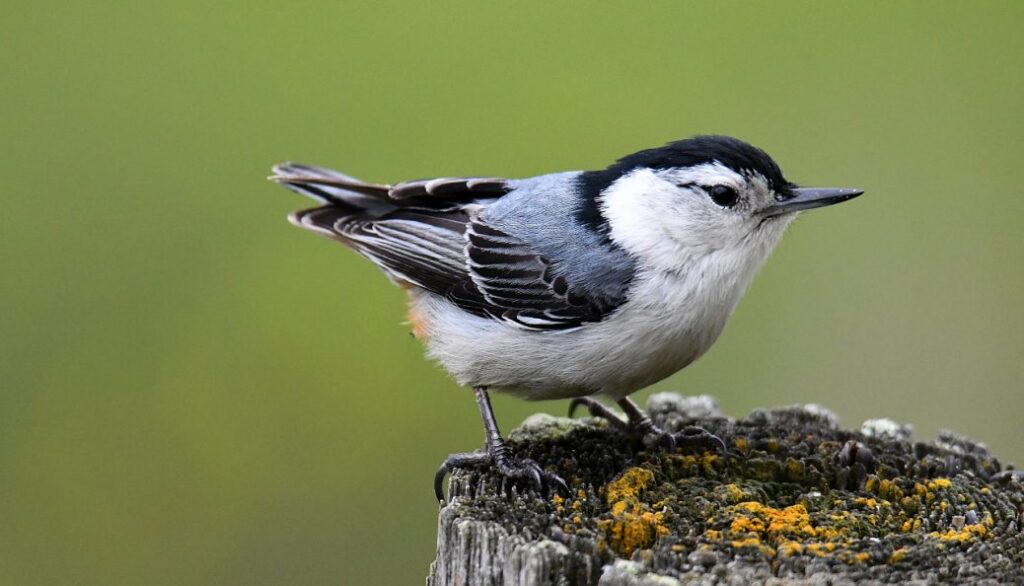
While not entirely blue, the White-breasted Nuthatch features a slate-blue back and is a common visitor to backyard feeders in Michigan.
Scientific Name: Sitta carolinensis
Wingspan: 7.9–10.6 inches
Length: 5.1–5.5 inches
Weight: 0.6–1.1 oz
These agile birds creep headfirst down tree trunks in search of insects and seeds. Their nasal “yank-yank” call is easy to recognize.
They love suet and sunflower seeds, making them frequent feeder visitors. Look for them in deciduous forests, parks, and suburban yards year-round.
13. Common Grackle
The Common Grackle may appear black at first glance, but closer inspection reveals an iridescent sheen of blue and purple across the head and back.
Scientific Name: Quiscalus quiscula
Wingspan: 14–18 inches
Length: 11–13 inches
Weight: 2.6–5 oz
These birds are social, loud, and opportunistic feeders, often found in large flocks. They inhabit fields, wetlands, and urban areas.
Grackles are known for their harsh, metallic calls. Though not everyone loves their aggressive feeder behavior, their glossy blue hues are worth admiring.
14. Cliff Swallow
Cliff Swallows have metallic blue backs and pale, square tails. Their white forehead and rusty throat make them easy to identify.
Scientific Name: Petrochelidon pyrrhonota
Wingspan: 11–11.8 inches
Length: 5–6 inches
Weight: 0.7–1 oz
These birds build gourd-shaped mud nests in colonies under bridges, cliffs, and eaves. They’re agile flyers and feed on flying insects.
You can spot them in Michigan from spring to early fall, especially near wetlands and open fields.
15. Great Blue Heron
The Great Blue Heron is the largest wading bird in Michigan and a majestic sight with its slate-blue body and slow, deliberate movements.
Scientific Name: Ardea herodias
Wingspan: 66–79 inches
Length: 38–54 inches
Weight: 4.6–5.5 lbs
Found near lakes, rivers, and marshes, these herons feed on fish, frogs, and small mammals. They stand motionless before striking with lightning speed.
Despite their size, they are graceful in flight, with their necks tucked in and long legs trailing behind. Look for them standing like statues at the water’s edge.
FAQs
1. What is the most common blue bird in Michigan?
The Blue Jay and Eastern Bluebird are among the most frequently spotted blue birds across Michigan.
2. When is the best time to see blue birds in Michigan?
Late spring through summer is ideal for seeing migratory blue birds like Indigo Buntings and Cerulean Warblers.
3. How can I attract blue birds to my backyard in Michigan?
Use birdhouses, mealworms, native plants, and birdbaths to create a welcoming habitat.
4. Do all blue birds stay in Michigan year-round?
No, some like the Tree Swallow and Indigo Bunting migrate south in winter.
5. Are there any rare blue birds to look out for in Michigan?
Yes, species like the Cerulean Warbler are considered rare and are exciting finds for birders.
Conclusion
Michigan’s birdlife is incredibly rich and colorful—especially when it comes to blue-feathered species. From the bold Blue Jay to the elusive Cerulean Warbler, each of these birds adds its own personality and charm to Michigan’s landscapes.
Whether you’re exploring the Upper Peninsula or walking through a suburban park in Detroit, keep your eyes and ears open for flashes of blue and melodic songs. Understanding their behaviors, habitats, and unique features will deepen your appreciation for these incredible birds.
With a bit of curiosity and some patience, you’ll soon be spotting and identifying blue birds like a seasoned birder. And by providing a safe and inviting environment in your backyard, you can even bring some of these birds right to your doorstep.
So the next time you hear a flutter or a tweet in the trees, take a closer look—you might just discover a new favorite blue bird right here in Michigan.
